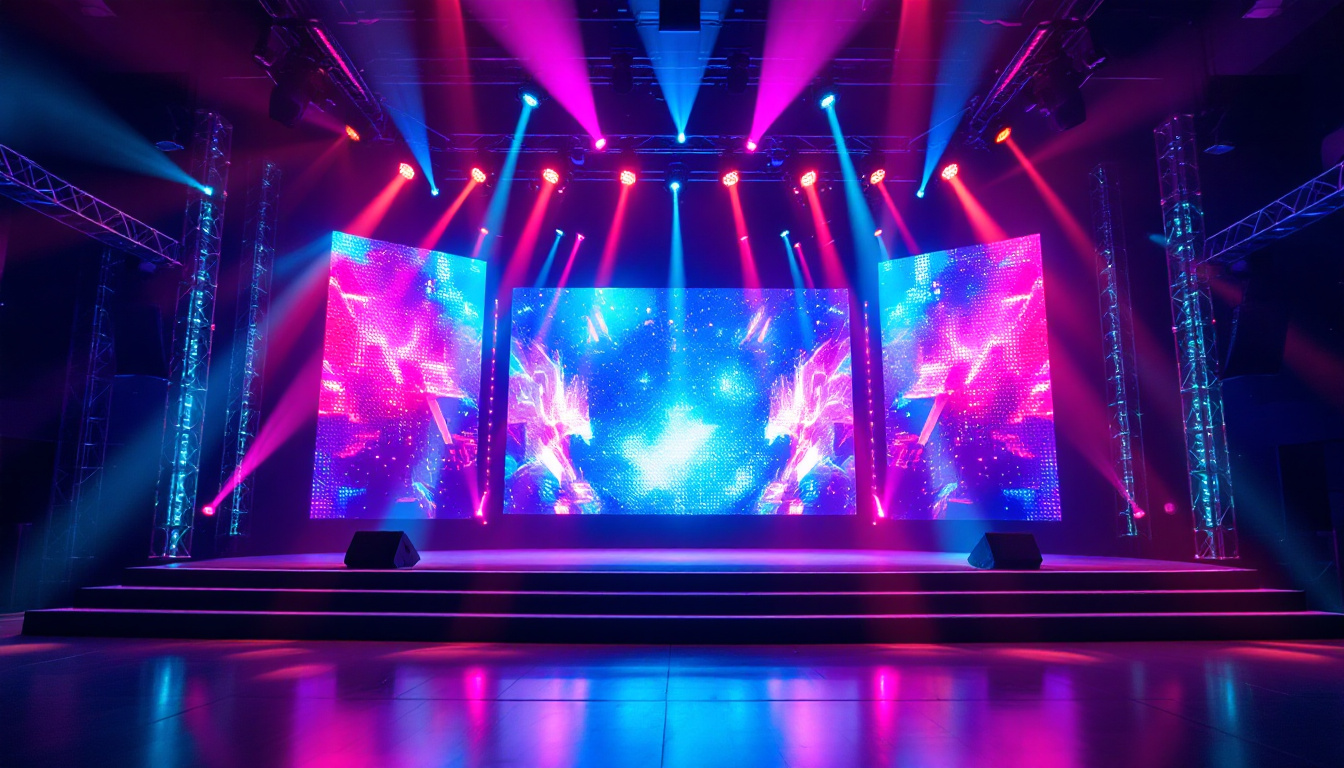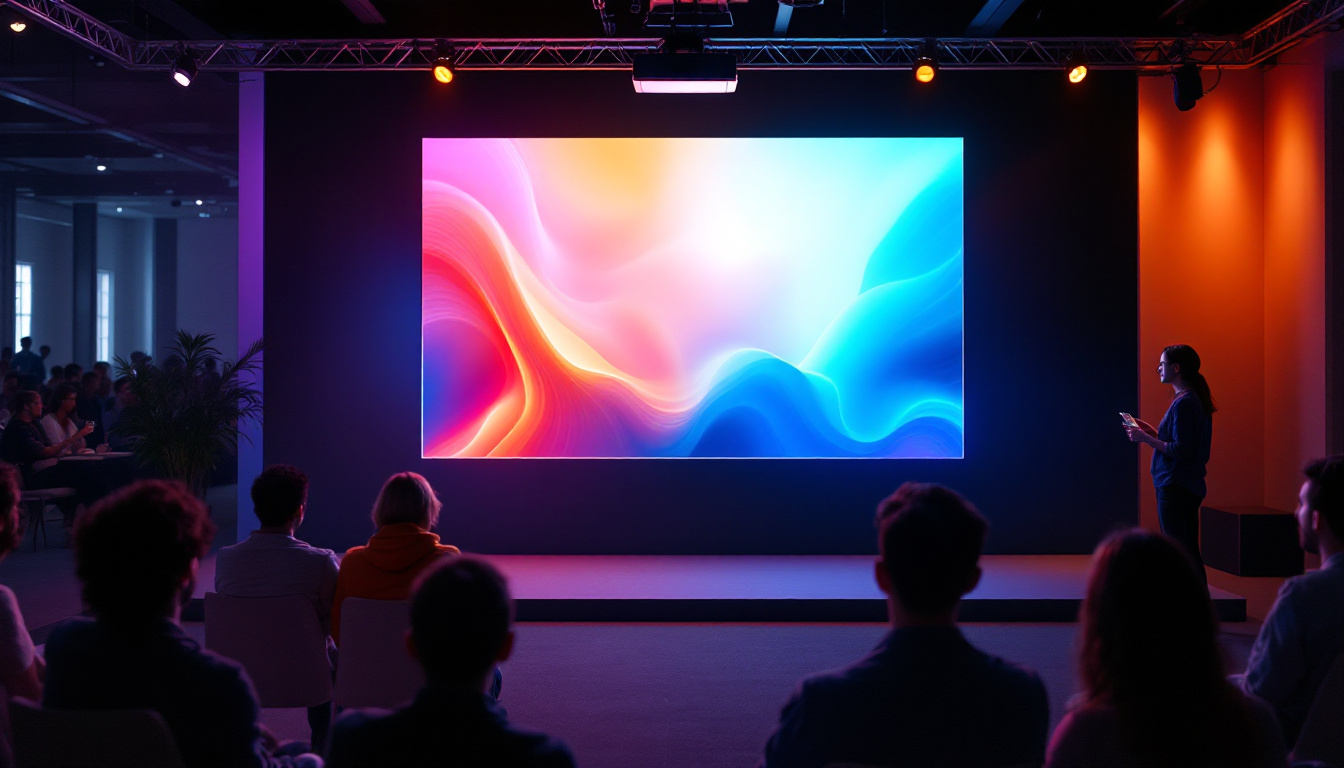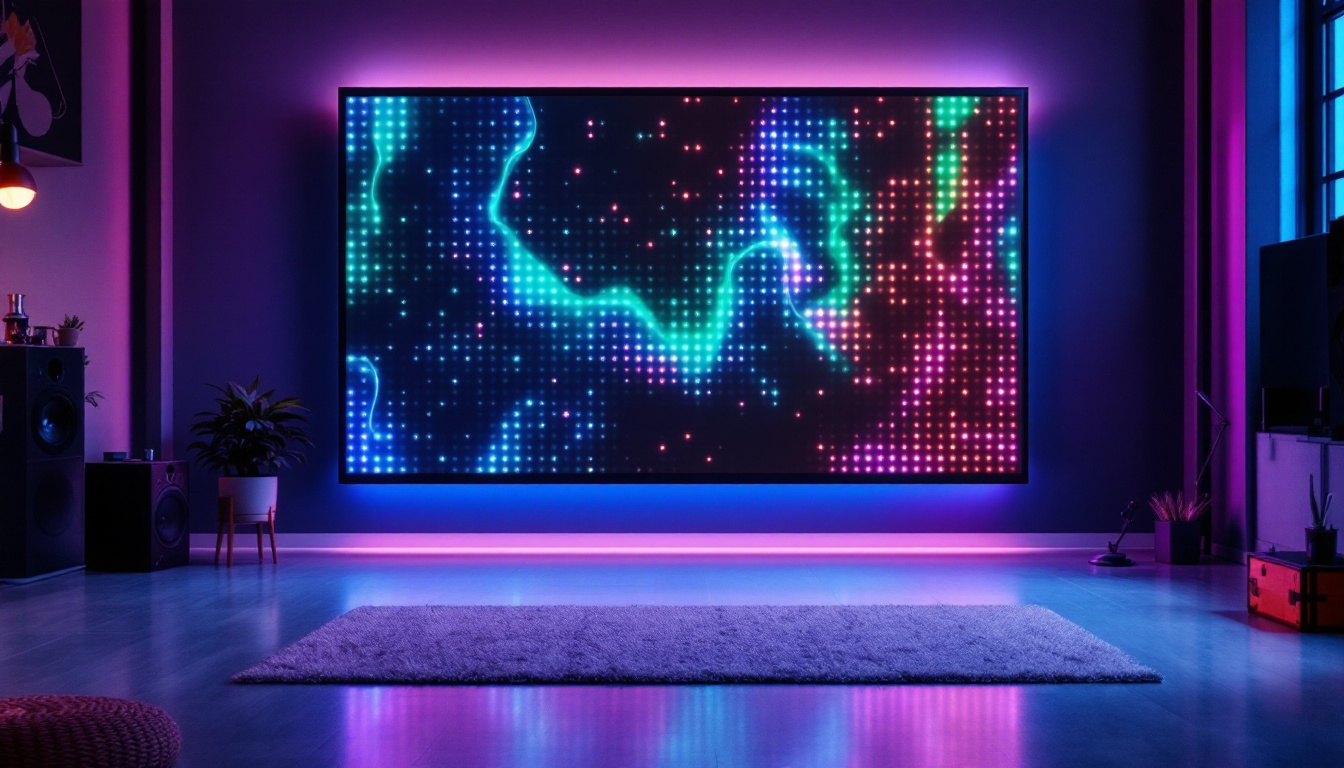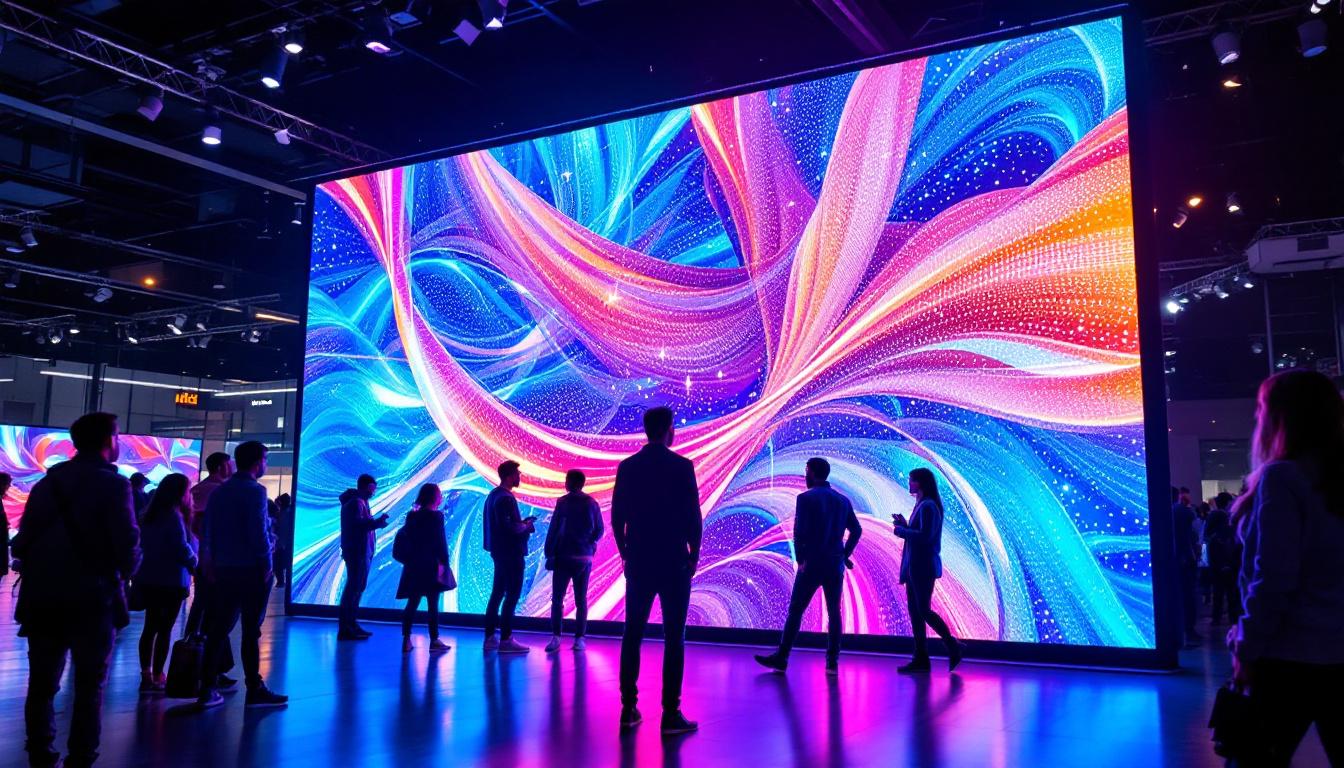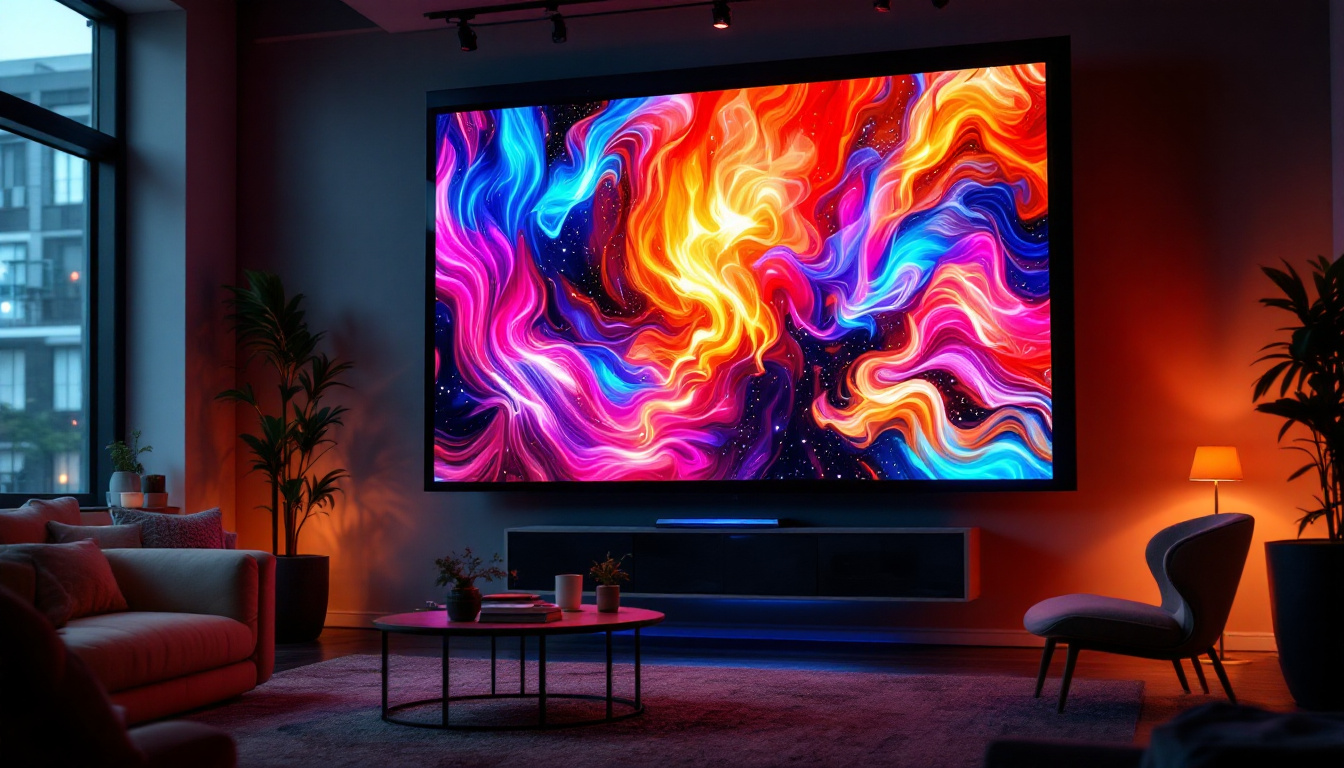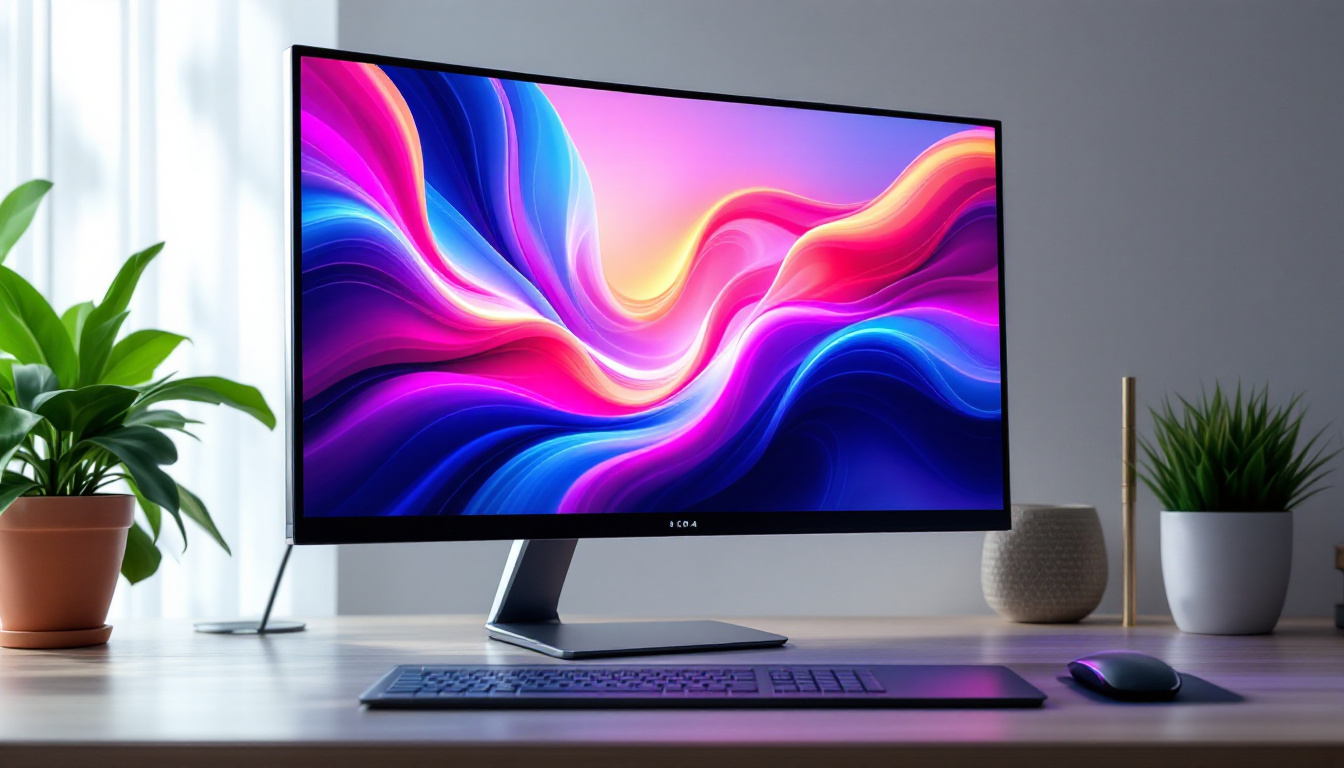In today’s digital age, computer monitors have become an essential part of both personal and professional environments. With the rapid advancement of technology, LED displays have emerged as a popular choice among users. This article aims to explore the intricacies of LED displays, their advantages, and how they compare to other types of monitor technologies.
Understanding LED Displays
LED, or Light Emitting Diode, displays utilize a series of tiny diodes to produce light and create images on the screen. Unlike traditional LCD monitors that require a separate backlight, LED displays integrate the light source directly into the screen, resulting in a thinner profile and improved energy efficiency. This innovation not only enhances the aesthetic appeal of modern devices but also contributes to a more sustainable approach to technology, as LED displays consume significantly less power than their predecessors.
How LED Displays Work
At the core of an LED display are numerous diodes that emit light when an electric current passes through them. These diodes can be arranged in various configurations, leading to different types of LED displays, such as edge-lit and full-array. Edge-lit displays have LEDs positioned along the edges of the screen, while full-array displays feature a grid of LEDs behind the entire screen, allowing for better brightness and contrast control. This arrangement is particularly beneficial for high dynamic range (HDR) content, where the contrast between the darkest and brightest parts of the image is crucial for an immersive viewing experience.
When it comes to color reproduction, LED displays excel due to their ability to produce a wider color gamut. This is achieved by combining red, green, and blue (RGB) diodes to create a full spectrum of colors. As a result, users can enjoy vibrant images and true-to-life colors, making LED displays ideal for graphic design, gaming, and multimedia consumption. Moreover, advancements in technology have led to the development of quantum dot displays, which further enhance color accuracy and brightness, providing an even richer visual experience.
Types of LED Displays
LED displays can be categorized into several types based on their technology and application. The most common types include:
- Standard LED: These displays use traditional RGB diodes and are suitable for general use.
- OLED (Organic LED): This advanced technology features organic compounds that emit light, resulting in deeper blacks and higher contrast ratios. OLED displays are particularly favored in high-end televisions and smartphones for their superior image quality.
- Mini-LED: A newer technology that uses smaller LEDs for backlighting, allowing for more precise control over brightness and contrast. This innovation is particularly useful in enhancing local dimming capabilities, which can significantly improve the viewing experience in darker scenes.
Each type of LED display has its own advantages and drawbacks, catering to different user needs and preferences. Understanding these differences is crucial when selecting the right monitor for specific tasks. For instance, while OLED displays offer remarkable picture quality, they may be more susceptible to burn-in, making them less ideal for static content. Conversely, standard LED displays are often more affordable and durable, making them a practical choice for everyday use. Additionally, the rise of smart LED displays, equipped with built-in streaming capabilities and voice assistants, has transformed how we interact with our screens, blending entertainment and functionality in ways previously unimaginable.
Advantages of LED Displays
LED displays offer several advantages over traditional monitor technologies, making them a preferred choice for many users. These benefits include energy efficiency, superior image quality, and a longer lifespan.
Energy Efficiency
One of the most significant advantages of LED displays is their energy efficiency. Compared to traditional LCD and CRT monitors, LED displays consume less power, which can lead to lower electricity bills over time. This is particularly beneficial for businesses that require numerous monitors, as the cumulative savings can be substantial.
Moreover, the reduced energy consumption also contributes to a smaller carbon footprint, making LED displays a more environmentally friendly option. As sustainability becomes increasingly important in modern society, many consumers are opting for energy-efficient technologies. In addition to the financial and environmental benefits, many LED displays are designed with features such as automatic brightness adjustment, which further optimizes power usage based on ambient light conditions. This intelligent technology not only enhances user comfort but also promotes energy conservation, aligning with the growing trend towards smart home and office solutions.
Image Quality
Image quality is another area where LED displays shine. With their ability to produce bright and vibrant colors, LED monitors are ideal for tasks that require precise color accuracy, such as photo editing and graphic design. The high contrast ratios found in many LED displays also enhance the viewing experience, providing deeper blacks and more vivid colors.
Additionally, LED displays often feature faster response times, reducing motion blur during fast-paced gaming or video playback. This makes them a popular choice among gamers who demand the best performance from their monitors. Furthermore, many LED displays support high dynamic range (HDR) content, which allows for a broader spectrum of colors and improved brightness levels. This capability not only enriches gaming experiences but also elevates the quality of streaming services and cinematic presentations, making LED displays a versatile choice for both entertainment and professional applications.
Longevity
LED displays are known for their durability and longevity. Unlike traditional CRT monitors, which can suffer from screen burn-in and other issues, LED displays have a longer lifespan, often lasting over 50,000 hours of use. This means that users can enjoy their monitors for years without significant degradation in performance.
The robust nature of LED technology also means that these displays are less prone to damage from physical impacts, making them suitable for various environments, including homes, offices, and schools. Additionally, many manufacturers offer warranties that reflect the confidence in their products’ longevity, often covering several years of use. This assurance not only provides peace of mind for consumers but also underscores the reliability of LED technology in meeting the demands of both casual users and professionals alike. As technology continues to advance, the evolution of LED displays is likely to bring even more improvements in performance and durability, solidifying their place as a leading choice in display technology.
Comparing LED Displays with Other Technologies
When selecting a monitor, it’s essential to compare LED displays with other technologies, such as LCD and OLED. Each type has its own set of characteristics that may appeal to different users.
LED vs. LCD
While LED displays are technically a type of LCD monitor, the distinction lies in their backlighting technology. Traditional LCD monitors use fluorescent backlighting, which can lead to less vibrant colors and lower contrast ratios compared to LED displays. In contrast, LED monitors provide better brightness and color accuracy, making them more suitable for a wide range of applications.
Additionally, LED displays are generally thinner and lighter than their LCD counterparts, making them easier to mount or transport. This is particularly advantageous for users who require portability or have limited desk space.
LED vs. OLED
OLED displays represent another advanced technology that has gained popularity in recent years. Unlike LED displays, which rely on backlighting, OLED screens use organic compounds that emit light individually. This allows for true blacks and exceptional contrast ratios, providing an immersive viewing experience.
However, OLED displays can be more expensive than LED monitors and may suffer from screen burn-in over time. For users who prioritize image quality and are willing to invest in higher-end technology, OLED may be the better option. Conversely, LED displays offer a more budget-friendly solution without compromising too much on performance.
Choosing the Right LED Monitor
When selecting an LED monitor, several factors should be considered to ensure that the chosen display meets the user’s needs. These factors include screen size, resolution, refresh rate, and connectivity options.
Screen Size and Resolution
The screen size and resolution are among the most critical aspects to consider when purchasing a monitor. Larger screens provide a more immersive experience, especially for gaming and multimedia consumption. However, it’s essential to balance screen size with resolution to avoid pixelation.
Common resolutions include Full HD (1920×1080), Quad HD (2560×1440), and 4K (3840×2160). Higher resolutions offer more detail and clarity, making them ideal for tasks that require precision, such as graphic design or video editing.
Refresh Rate and Response Time
For gamers and those who engage in fast-paced activities, refresh rate and response time are crucial specifications. The refresh rate, measured in hertz (Hz), indicates how many times the screen refreshes per second. A higher refresh rate results in smoother motion and reduced motion blur, enhancing the overall gaming experience.
Response time, measured in milliseconds (ms), refers to how quickly a pixel can change from one color to another. Lower response times are preferable for gaming, as they minimize ghosting effects during fast movements. A monitor with a refresh rate of at least 144Hz and a response time of 1ms is ideal for competitive gaming.
Connectivity Options
Modern monitors come equipped with various connectivity options, including HDMI, DisplayPort, and USB-C. It’s essential to ensure that the chosen monitor is compatible with the user’s devices and offers sufficient ports for peripherals. Additionally, features like built-in speakers and adjustable stands can enhance the overall user experience.
Conclusion
LED displays have revolutionized the way users interact with technology, offering superior image quality, energy efficiency, and longevity. Understanding the various types of LED displays and their advantages can help individuals make informed decisions when selecting a monitor that meets their needs.
As technology continues to evolve, LED displays are likely to remain a popular choice among consumers and professionals alike. By considering factors such as screen size, resolution, refresh rate, and connectivity options, users can find the perfect LED monitor to enhance their digital experience.
In a world where visual clarity and performance are paramount, investing in a quality LED display is a step toward achieving a more productive and enjoyable computing experience.
Discover LumenMatrix’s Advanced LED Display Solutions
Ready to elevate your visual experience with the latest in LED technology? Look no further than LumenMatrix, a pioneer in crafting immersive LED display modules tailored for any setting. Whether you’re seeking to boost your brand’s presence with an Indoor LED Wall Display, captivate passersby with an Outdoor LED Wall Display, or innovate on the move with a Vehicle LED Display, LumenMatrix has the solution. Our extensive range includes LED Poster Displays, LED Sports Displays, Floor LED Displays, Custom LED Displays, All-in-One LED Displays, and even LED Transparent Displays. Embrace the future of visual communication and make a lasting impression. Check out LumenMatrix LED Display Solutions today and transform the way you share your message.





